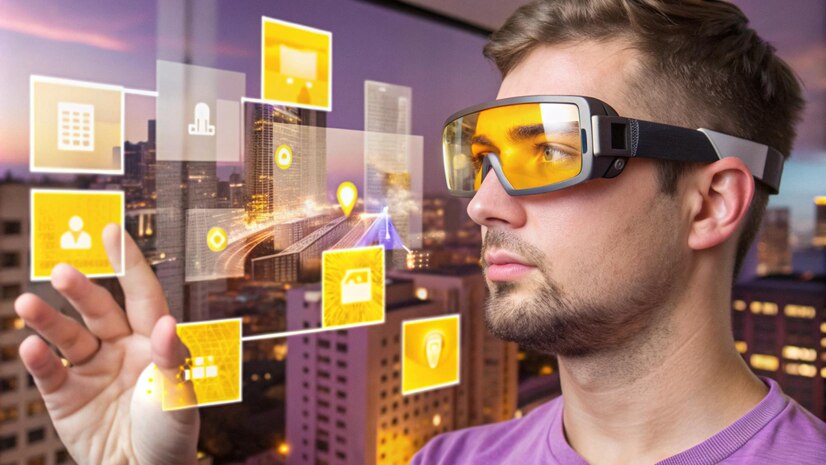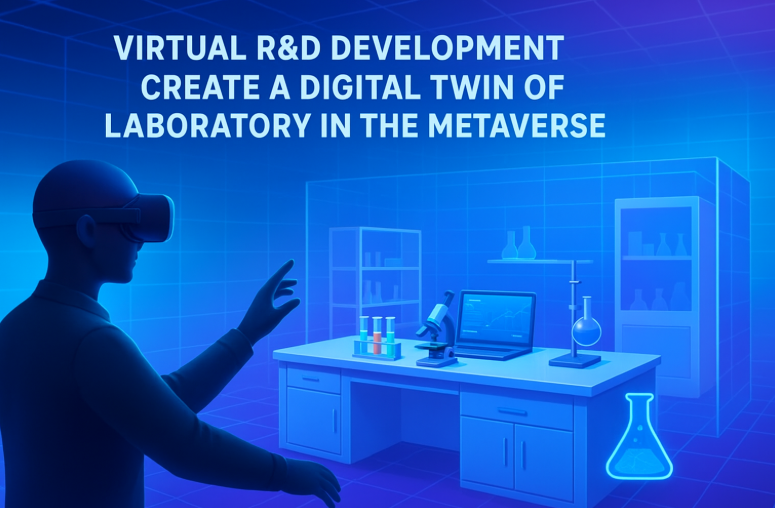Apple Vision Pro is one of the most expected products, providing a new realm of immersive reviews through augmented reality (AR) and virtual reality (VR). With Vision Pro, developers can build cutting-edge packages that use superior hardware, spatial computing, and immersive generation. However, builders need to be ready with the right gear, skills, and know-how to create hit Vision Pro apps.
This newsletter explores what a Vision Pro app developer wishes to realize, including the technologies involved, development tools, design concerns, and acceptable practices.
1. Understanding Vision Pro and Its Capabilities
Before diving into development, it’s critical to completely comprehend the Vision Pro device and its abilities. Apple’s Vision Pro is a combined-fact headset that mixes AR and VR reviews through spatial computing. Apple designed the headset to seamlessly integrate the virtual and physical worlds, enabling users to interact with apps and environments through gestures, voice instructions, and eye tracking.
Key Features of Vision Pro:
- Spatial Computing: The device allows customers to engage with virtual content in a 3D space, making it crucial for builders to consider person-to-person interaction beyond 2D displays.
- Advanced Optics: Vision Pro offers excessive-resolution displays and advanced sensors, making it ideal for visual-heavy programs.
- Gesture and Eye Tracking: Developers must consider integrating gesture-based controls and eye-monitoring mechanisms in person-pleasant app studies.
- 3-D Audio: Audio is spatially allotted, meaning that developers want to consider how sound is used within the app to enhance immersion.
- Seamless Integration: Vision Pro apps can relate to different Apple gadgets, which permits pass-device experiences.
2. Key Development Tools for Vision Pro App Development
Apple provides an intense atmosphere of development tools for constructing Vision Pro apps. These tools are vital for crafting super apps that fully exploit the device’s talents.
Xcode
Xcode is Apple’s integrated development environment (IDE) for building apps throughout its structures, along with Vision Pro. It offers a collection of functions, including a code editor, debugging equipment, and simulators, all of which are necessary for creating immersive apps.
RealityKit
RealityKit is Apple’s framework for AR and VR development. It presents APIs that simplify making 3D reports with realistic physics, rendering, and object manipulation. Developers can use RealityKit to build gadgets that seem to exist within the person’s bodily surroundings.
ARKit
ARKit, Apple’s augmented truth framework, enables developers to integrate real-world factors with digital content. For Vision Pro, ARKit allows builders to tune the person’s surroundings and place digital items inside them. This is useful for apps that require object placement, such as indoor design apps, instructional equipment, and interactive games.
Unity and Unreal Engine
In addition to Apple’s local development tools, third-party recreation engines like Unity and Unreal Engine are also supported. These engines are typically used to develop three-D games and are extremely good for building graphically wealthy, interactive stories for Vision Pro.
3. Designing User Experiences for Vision Pro
Vision Pro affords a totally exceptional user experience (UX) from traditional devices like smartphones or tablets. Developers need to reconsider how users will engage with their applications in a three-dimensional area, using gestures, eye actions, and voice.
Spatial Design
The number one undertaking with Vision Pro is designing spatial interfaces. Unlike 2D apps, which depend on flat displays, Vision Pro apps exist in a 3-D environment. Developers must cautiously place gadgets in the user’s space and ensure the interface elements are effortlessly reachable and intuitive.
Immersive Interaction
Vision Pro supports various interactions, from hand gestures to voice instructions. Developers want to create apps that reply smoothly to those input techniques. This calls for planning for multi-modal entry, wherein customers might also switch among gestures, voice, or eye manipulation depending on the context.
Focus on Accessibility
In combined fact environments, it’s essential to construct apps available to all customers. For example, a few users may have problems with hand gestures or eye-tracking, so developers should recall presenting opportunity controls, voice instructions, or external entry gadgets.
4. Performance Optimization
Performance is a critical element of Vision Pro app development. Since the tool manages complex spatial computing and renders 3D environments, apps need to be optimized to run smoothly. Poorly optimized apps can also lead to uncomfortable consumer reviews, including movement sickness or lag.
Rendering Efficiency
Developers ought to optimize the rendering pipeline to ensure easy-frame quotes. Apple’s graphics API, which offers low-level access to the GPU, can help achieve better rendering performance by using gear like Metal.
Battery Optimization
Vision Pro is a wearable device, which means battery life is a key consideration. Developers need to optimize their apps for power performance by reducing pointless heritage strategies, prescribing excessive-intensity images, and optimizing code.
Latency Reduction
Any delay in interactions can disrupt the immersive experience. Developers should focus on decreasing latency in both input and rendering processes. This is especially vital in apps in which real-time interactions, such as gaming or navigation, are crucial.
5. Testing Vision Pro Apps
Testing is integral to Vision Pro app development, ensuring the app behaves as expected in a spatial environment. Unlike traditional app trying, in which builders are conscious of 2D interactions, Vision Pro checking needs to cover spatial interactions, 3D environments, and immersive reports.
Simulator Testing
Xcode’s simulator permits developers to test Vision Pro apps on a digital tool. While it doesn’t fully reflect the enjoyment of using the actual headset, it offers a close approximation for checking simple functionality, interactions, and overall performance.
On-Device Testing
For the maximum correct testing, builders should check their apps on the real Vision Pro hardware. This allows them to evaluate real global elements, along with how the app responds to gestures, eye movements, and the bodily environment.
6. Best Practices for Vision Pro App Development
To construct a hit Vision Pro app, builders ought to observe these satisfactory practices:
- Design for Comfort: Ensure that three-D factors and interactions are placed in positions that don’t require intense head moves or unnatural gestures.
- Use Natural Interactions: Integrate gestures, eye-monitoring, and voice instructions seamlessly to make the app sense and intuitive.
- Focus on Immersion: Sound, photos, and user feedback must all make contributions to a cohesive, immersive experience.
- Optimize for Performance: Prioritize performance to prevent lag, overheating, and battery drain.
Conclusion
Vision Pro represents the next frontier in app development, presenting a world of opportunities through blended fact reports. To construct successful Vision Pro apps, developers want to master new tools like RealityKit and ARKit, reconsider their approach to UX design, and optimize their apps for overall performance. With the proper methods and abilities, developers can create compelling apps that push the limits of the immersive era.
FAQs
1. What development equipment do I need for Vision Pro app development?
Developers want tools like Xcode, RealityKit, ARKit, and, optionally, Unity or Unreal Engine to develop Vision Pro apps.
2. How do customers interact with Vision Pro apps?
Users interact through hand gestures, eye monitoring, and voice instructions, offering an extra natural and immersive experience.
3. What are the challenges of growing Vision Pro apps?
Challenges include designing spatial interfaces, optimizing performance, and ensuring low latency for easy interplay.
4. Can I develop Vision Pro apps using Unity or Unreal Engine?
Yes, Unity and Unreal Engine are compatible with Vision Pro, allowing builders to create graphically rich reviews.
5. How essential is checking out in Vision Pro app development?
Testing is critical to ensure that the app plays properly in three-dimensional surroundings and that interactions feel natural and responsive.



